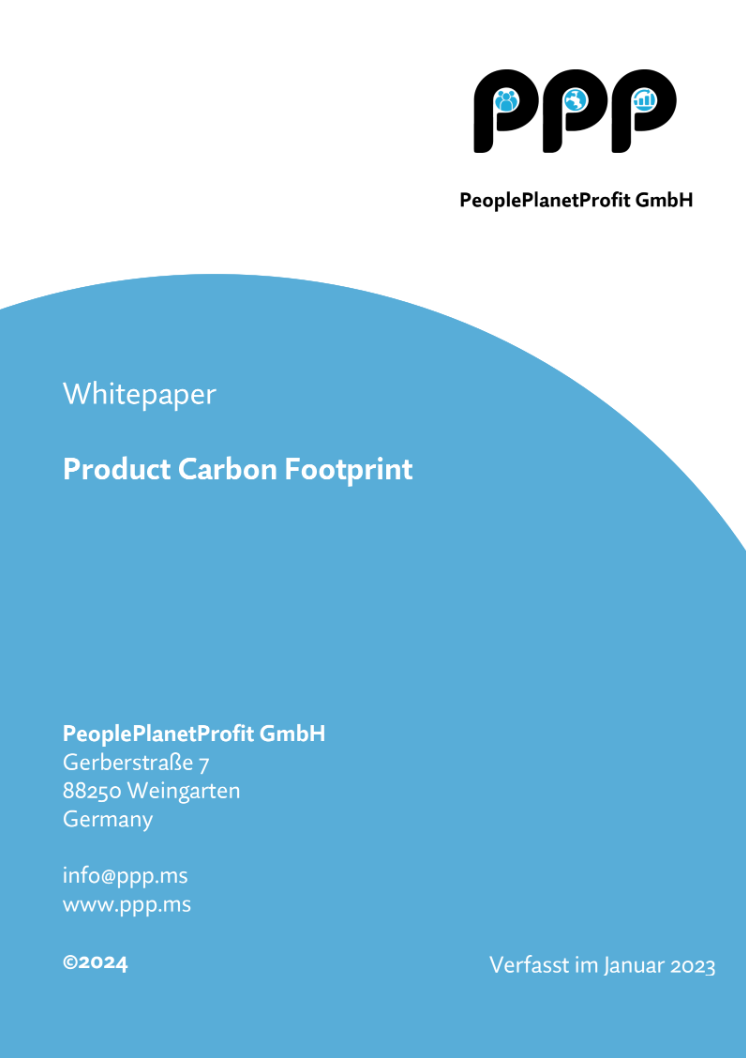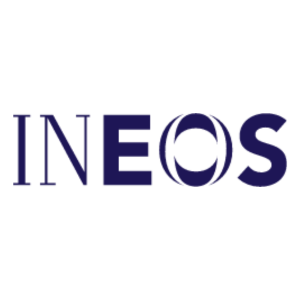What is a product carbon footprint or CO2 footprint of products?
The product carbon footprint (PDF) refers to the greenhouse gases generated throughout the entire value chain of a product or service. The PCF is expressed in CO₂ equivalents and provides information on the impact of a product or service on climate change. By accurately measuring these emissions, companies can make informed decisions to reduce their environmental impact while promoting sustainable business practices.
Key reasons and objectives for measuring the Product Carbon Footprint (PCF)
The PCF plays a crucial role in the sustainability assessment of products. It enables companies to quantify their environmental impact, make greener decisions and set sustainability targets. By accurately measuring and reducing their carbon footprint, companies not only aim to have a positive environmental impact, but also pursue the goal of reducing costs in the long term. In addition, transparent reporting on the product carbon footprint helps to strengthen the brand image.
All advantages at a glance
Our services for the product carbon footprint:
We focus our services on supporting companies and organisations on their path to environmental and climate responsibility. We offer a wide range of services focussed on Product Carbon Footprinting.
With the help of PPP, they receive a detailed PCF of their products and can thus set targets for improvement. We are also happy to support you in realising these newly set targets.
- Definition of the main products and system boundaries
- Determination of the functional and declared unit
- As-is assessment including analysis of individual business processes
- Utilisation of data from existing sustainability and management systems
- Definition of the life cycle
- Support with data collection and data management
- Calculation of sensitivity analyses
- Calculation of individual product carbon footprints, on request with LCA software such as LCA for experts (formerly GaBi) or Umberto with Ecoinvent database
- Preparation of background reports in accordance with required guidelines
- Verification of the PCF by a third, independent party
- Formulation of recommendations for action
- Preparation of a clear summary as a marketing tool
- Training of employees and support for continuous improvement
Unique advantages with PPP
Working with PPP brings unique benefits. We support you not only in the preparation of PCFs, but also in the further implementation of more sustainable business practices. Continuous support and training for employees are unique services that enable greater success of implementation.
- Fast turnaround: Thanks to state-of-the-art software systems, we deliver results in record time.
- International team: Our global team is on hand to help you create and optimise your product carbon footprint.
- Industry expertise: Our team has in-depth knowledge of sustainability, environmental management and social responsibility and can draw on extensive experience in various industries.
- Customised solutions: Every business is unique and therefore we offer customised and individual solutions to meet your specific needs. Our aim is to ensure that your sustainability strategy is maximised.
- Measurable improvements: Our created PCF’s enable product improvements, accurate marketing statements and process optimisations.
- Ongoing support: We are your long-term partner for sustainability. Our support does not end with the creation of the PCF, but includes the development of a sustainable strategy for the future.
- Improved sustainability practices and a strengthened image: Improved sustainability practices can strengthen the image of the brand and the company. We help you to utilise the findings for your marketing strategy.

Product Carbon Footprint - WhitepaperWhitepaper an folgende E-Mail senden: |
Free initial consultation
Would you like to find out more about the product carbon footprint? Don’t hesitate to contact us and arrange a free initial consultation. Our experts are at your disposal to discuss your specific requirements and offer you customised solutions.
Patrick Wortner
Partner | MBA and Eng., Dipl.-Ing. (FH)
References/Best Cases
INEOS Compounds Aycliffe Ltd
PCF according to ISO 14067 and 14040/44 and verified PCF calculation tool
Our environmental labelling is based exclusively on the normative requirements of ISO 14040 and ISO 14044. Our balances are calculated using recognised life cycle assessment software systems such as Umberto. Current databases, e.g. from Ecoinvent, are used as a basis for this. All calculations, decisions and interpretations are documented in a report. We do not limit ourselves to specific products, sectors or regional boundaries.
All enquiries regarding the process of preparing the balance sheets can be directed to info@ppp.ms. We want to consider and respect the interests of all our stakeholders.
Methods for calculating the product carbon footprint
The product carbon footprint (PCF) is calculated using various methods to quantify the total greenhouse gas emissions over the entire life cycle of a product. Companies often use software tools such as GaBi and Umberto, which enable an evaluation in accordance with international standards such as ISO 14067. If the PCF determination is still based on standards such as ISO 14040/44, precise data on material consumption, energy consumption, waste, transport and other relevant factors are collected after the system boundaries have been defined in order to then apply standardised emission factors. Data is collected from various sources, including internal company records, supplier information and industry-standard databases. Accurate and detailed data collection and calculation enables companies to understand the carbon footprint of products and take targeted measures to reduce it.
ISO 14067 and its significance for the PCF
ISO 14067 is an internationally recognised standard developed specifically for the calculation, communication and verification of the Product Carbon Footprint (PCF). Its aim is to provide clear guidance and methods. This enables accurate and reliable PCF values to be determined.
This standard promotes the standardisation of the PCF calculation process, which improves comparability between products and companies. By complying with ISO 14067, companies can ensure that their PCF calculations comply with international standards and therefore provide credible and transparent results. The results are therefore meaningful and can also be used for marketing purposes.
Integration of the PCF into the sustainability strategy of companies

The integration of the product carbon footprint (PCF) into a company’s sustainability strategy is of crucial importance. Companies set measurable targets to reduce their CO2 emissions, which are embedded in the long-term sustainability strategy.
This enables not only the identification of products with high emissions, but also the monitoring of progress. More environmentally friendly alternatives can be developed through targeted optimisation and redesign. The PCF results are used transparently in corporate communications to build trust with customers and stakeholders.
Supply chain management and sustainable procurement practices are also integrated into the strategy to make the entire value chain more sustainable.
Outlook
The outlook for the Product Carbon Footprint (PCF) shows a promising future. The PCF will continue to develop and become even more accurate. This is because companies are increasing their awareness of sustainable business practices. The application of the PCF will expand to a wider range of industries and products to enable a more comprehensive sustainability assessment.
Technological advances will further improve PCF calculations, and increasing consumer environmental awareness will continue to drive demand for low PCF products. Overall, PCF will play an increasingly central role in the business world, promoting sustainable practices and supporting the transition to a low-carbon economy.
Companies that integrate carbon emissions – especially at product level – into their strategies will not only be more environmentally friendly, but also more competitive and therefore more sustainable.
Free initial consultation
Would you like to find out more about the product carbon footprint? Don’t hesitate to contact us and arrange a free initial consultation. Our experts are at your disposal to discuss your specific requirements and offer you customised solutions.
Patrick Wortner
Partner | MBA and Eng., Dipl.-Ing. (FH)
Frequently asked questions
What is the Product Carbon Footprint (PCF)?
The product carbon footprint (PCF) is a key figure that measures the greenhouse gases of a product over its life cycle. This can include the extraction of raw materials, production and all transport through to use and disposal. The PCF is expressed in CO2 equivalents and therefore provides a comprehensive insight into the impact of a product on climate change.
How is the PCF calculated?
The PCF is calculated using internationally recognised methods such as ISO 14067, where precise data on material consumption, energy consumption and transport is recorded. This data serves as the basis for the application of standardised emission factors to all phases of the product life cycle, whereby the PCF is determined in CO2 equivalents.
What are the benefits of calculating the PCF for companies?
Calculating the PCF offers companies many advantages. In addition to quantifying their environmental impact, it enables the definition and monitoring of specific sustainability targets. In the long term, the identification of potential savings can reduce costs, strengthen the brand image and facilitate compliance with legal regulations and requirements in the supply chain.
How does ISO 14067 support the PCF calculation?
ISO 14067 provides clear guidance and methods for calculating PCF. This standard helps companies to determine accurate and reliable PCF values by providing standardised processes and guidelines. It also facilitates the communication of PCF results to stakeholders, which promotes transparency and trust in PCF reporting. ISO 14067 thus helps to standardise the PCF calculation process and support companies in determining their CO2 emissions efficiently and in accordance with standards.
How can companies reduce their PCF?
By calculating the PCF, companies can identify emission hotspots. This enables targeted reduction measures to be taken. Companies can reduce their PCF through various targeted measures: Such as optimising energy consumption, increasing the use of renewable energy sources, reducing packaging waste and offcuts and promoting environmentally friendly production processes. Reviewing supply chains and introducing sustainable procurement practices are other key elements for successfully reducing the PCF. As every company is unique, it is necessary to identify customised and individual optimisation measures that meet specific needs.
What is the importance of continuous data collection and verification?
It is important to use accurate and up-to-date information in order to achieve reliable results. Continuous data collection enables this and thus an accurate and reliable measurement of environmental impacts. Regular data updates and independent verifications ensure the credibility of the results and improve the quality of reporting.
How does PPP support companies on the topic of PCF?
People Planet Profit GmbH (PPP) provides companies with comprehensive support in dealing with the PCF. Individual PCFs are calculated using state-of-the-art software tools such as GaBi and Umberto. PPP’s international team supports companies in determining and optimising their carbon footprint. This enables not only measurable improvements, but also well-founded decisions and the implementation of sustainable business strategies to create more environmentally friendly products in the long term.



